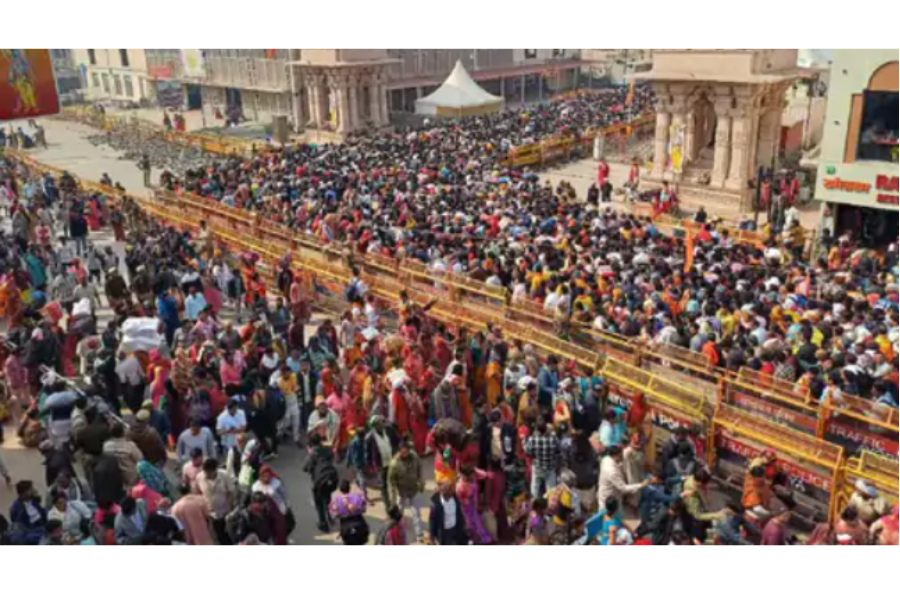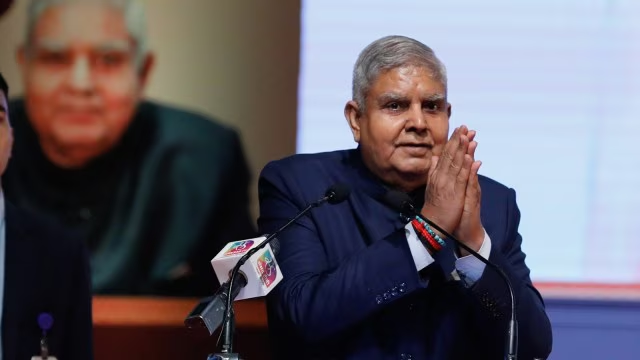Government Implements Measures to Manage Crowd Control and Infrastructure Strain
Massive Crowds at Maha Kumbh: Local Communities Struggling with Overflowing Pilgrims
Prayagraj, Ayodhya, and Varanasi Face Unprecedented Crowds as Maha Kumbh Mela Continues
Prayagraj, February 18, 2025 – As the Maha Kumbh Mela draws to a close in 9 days, the massive influx of devotees shows no signs of slowing down. Local residents across Prayagraj, Ayodhya, and Varanasi are facing overwhelming crowds, with essential services and infrastructure stretched to their limits. The ongoing Mela, which has already seen over 543 million pilgrims, is placing an immense burden on the cities’ facilities.
Prayagraj: Overwhelmed by Record Crowds
Prayagraj is struggling to manage the surge of devotees. Over 20,000 pilgrims arrived and departed on Sunday alone, with 60 flights and numerous special trains facilitating the movement. The airport and railway stations are operating at full capacity, while traffic in the city has been severely congested, with some main roads experiencing jams up to 10-12 kilometers long. To manage the situation, the authorities have set up holding areas to accommodate over 100,000 people near the Prayagraj Junction, but traffic remains at a standstill. While the Mela area has been declared a no-vehicle zone, VIP vehicles continue to add to the chaos. Devotees are walking up to 10 kilometers to reach the sacred sites, with schools up to class 8 remaining closed until February 20 due to the congestion.
Ayodhya: Roads Blocked, Local Residents Restricted
In Ayodhya, the situation has become critical with up to 7 lakh people visiting daily, far surpassing the typical 20,000-25,000 pilgrims that the city normally sees. The five main roads leading to the Ram Temple are completely clogged, and local residents are confined to their homes to avoid getting caught in the crowd. With the no-vehicle zone in effect, supply trucks are unable to deliver goods, causing a shortage of essential supplies. Prices have surged, with tomatoes and potatoes now costing as much as 150 rupees per kilogram. Additionally, wheelchair rentals have gone up to 2,000 rupees, further escalating the financial strain on visitors and locals alike.
Varanasi: Healthcare and Accessibility Issues Amid Record Footfall
Varanasi, home to the Kashi Vishwanath Corridor, is also grappling with an influx of 8 to 10 lakh devotees daily, a situation that has been ongoing for the past 25 days. The city’s infrastructure is under immense pressure, and local residents are finding it nearly impossible to go about their daily routines due to the lack of mobility caused by the crowds. The roads leading to key areas are heavily congested, and healthcare access has become a major concern. In case of an emergency, reaching a hospital is becoming increasingly difficult, as noted by Manish Kesari, a member of the Vishweshwar Ganj Kirana Association.
Government Interventions to Manage the Situation
In response to the escalating crowding, the central government has deployed additional security forces, including the Central Reserve Police Force (CRPF) and Delhi Police, at key railway stations. The Indian Railways has also temporarily halted the sale of platform tickets between 4 PM and 11 PM to help control the flow of passengers.
Additionally, the Indian Railways is planning to establish holding areas at 60 major stations across the country to avoid overcrowding during peak seasons in the future. Looking ahead, the Ardh Kumbh Mela will be held in Nashik and Haridwar in 2027, while the Simhastha Mela in Ujjain, Madhya Pradesh, is slated for 2028.
The ongoing Maha Kumbh Mela continues to test the limits of infrastructure and resources in these cities, leaving local residents and authorities grappling with the challenges of managing such a massive gathering of pilgrims.



